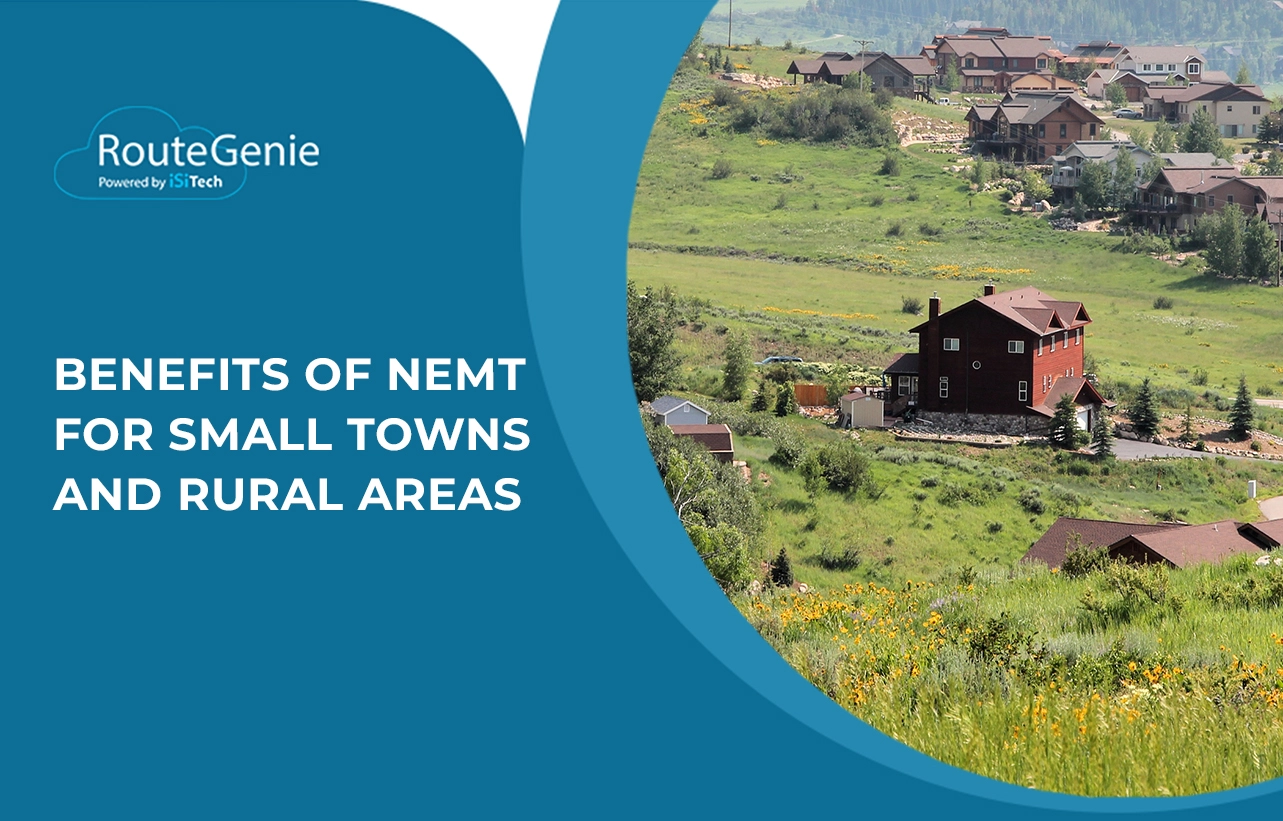Benefits of NEMT for Small Towns and Rural Areas

Even though small-town living may appear idyllic, rural residents encounter various obstacles that their city counterparts do not. A serious example is gaining access to medical care.
One of the disadvantages of residing in remote regions of the United States is the challenge of obtaining high-quality healthcare. When fewer local institutions are easily accessible, traveling to urban centers for appointments and consultations becomes necessary.
Even if attentive treatment is crucial, lengthy commutes to clinics and hospitals are not practical for individuals who require frequent care. As a result, non-emergency medical transportation (NEMT) services are an indispensable component of healthcare in rural areas.
Contents:
- Small Towns: A Unique Challenge for Healthcare
- Medicaid’s Role in Rural America’s Healthcare
- Why Small Towns Require NEMT Services
- NEMT: A Pathway to Quality Healthcare for Rural America
Small Towns: A Unique Challenge for Healthcare
Approximately 61 million Americans, or more than 20%, reside in designated rural zones. Nevertheless, these substantial communities continue to lag considerably behind their urban counterparts in terms of access to high-quality medical care.
In addition, significant disparities exist between large cities and small towns in critical areas such as insurance coverage. Private health insurance coverage among the rural non-elderly population in the United States is a mere 61%.
Rural hospitals have also been ceasing operations without any alternative healthcare facility to take their place, which is an additional concerning development. According to a study by the US Government Accountability Office (GAO), 100 rural hospitals (4% of the nation’s total) closed between 2013 and 2020.
Rural Americans who reside in sparsely populated, underdeveloped regions encounter a multitude of healthcare obstacles:
Limited options
As stated previously, more hospitals and clinics are likely to close in rural and small towns. This drastically restricts the available healthcare options, compelling patients in need of medical attention to travel considerable distances.
Affordability
An additional distinction between urban and rural populations is that there is a greater number of unemployed and low-income individuals in rural areas. The transportation and specialized care expenses these communities must bear are massive deterrents that prevent them from seeking out medical attention, sometimes even during urgent situations.
Lack of communication
Due to the limited cell phone and internet network coverage in many rural areas, patients encounter challenges when attempting to communicate with their healthcare providers and schedule appointments.
The Centers for Medicare & Medicaid Services (CMS) report that 19 million Americans have no access to the Internet, and 14.5 million of them live in rural America.
Poor transportation infrastructure
A lot of small towns don't have great public transportation options, with some even being called transit deserts. This results in significant challenges for patients who do not own a vehicle or are otherwise unable to drive. Addressing and mitigating these transportation barriers to healthcare is of utmost importance.
Elderly and physically disabled patients require mobility aids, which are considerably more challenging to obtain in rural regions. Telehealth and access to care non-emergency transportation provide them with a lifeline when it comes to medical care.
Medicaid’s Role in Rural America’s Healthcare
Medicaid is a government-funded public health insurance program and is an indispensable asset for numerous patients residing in rural regions of the United States. Medicaid provides health insurance to as many as one in every four rural Americans, with 24% of non-elderly people benefiting from the program. This figure is even higher in states that expanded Medicare coverage under the Affordable Care Act (ACA).
Medicaid assists in funding important medical procedures, consultations, and transportation for its beneficiaries. Medicaid also reimburses the expense of NEMT services for patients who meet specific eligibility criteria.
Why Small Towns Require NEMT Services
 The nation’s healthcare system faces a massive challenge in small communities and rural areas. Even those with private insurance or are on Medicaid often can't get the medical care they need because they don't have a way to get to their appointment. For this reason, there is a need to increase access to NEMT services for rural population centers.
The nation’s healthcare system faces a massive challenge in small communities and rural areas. Even those with private insurance or are on Medicaid often can't get the medical care they need because they don't have a way to get to their appointment. For this reason, there is a need to increase access to NEMT services for rural population centers.
The following advantages are immediately apparent in rural regions serviced by NEMT providers and their qualified drivers:
1. Improved access to transportation
By providing transport options, more people can avoid missing appointments or delaying care. Medicaid covers the cost of NEMT for those in need.
Microtransit options have the potential to significantly improve accessibility for patients requiring aid.
2. Assistance for special needs patients
NEMT providers have the resources to assist in accommodating patients with special mobility requirements. Instead of venturing out on their own and potentially jeopardizing their well-being, these individuals can call on NEMT services. A certified medical assistant will accompany them on their way to their healthcare visits.
3. More favorable health results
The elimination of transport barriers increases access to preventative examinations, procedures, and health appointments among patients residing in rural areas. Adherence to these treatments improves health outcomes.
Patients with chronic conditions can receive regular care, and traveling to fulfill prescriptions is no longer a burden. Overall, community well-being improves as a result.
These benefits highlight the benefits of NEMT services within the healthcare environment of rural America.
Additionally, NEMT services benefit patients and healthcare providers by reducing the costs associated with accessing healthcare and increasing the rate of utilization.
NEMT: A Pathway to Quality Healthcare for Rural America
NEMT providers have the potential to enhance their operations and grow profits by utilizing the latest NEMT software. These solutions help with scheduling, dispatch, routing, and billing while improving patient experience.
Upgrade your NEMT services by integrating robust NEMT software, enabling you to provide superior healthcare to rural clients in the most isolated areas
About the author

As RouteGenie's Marketing Director, Yurii gained deep knowledge in the NEMT industry. He is an expert in marketing, utilizing all marketing channels to build RouteGenie's brand and to make sure NEMT providers have access to powerful NEMT software that can boost their growth. Yurii shares his knowledge by writing content on topics related to marketing, and the healthcare industry: medical transportation, home care, and medical billing.
The author assumes no responsibility or liability for any errors or omissions in the content of this site. The information contained in this site is provided on an "as is" basis with no guarantees of completeness, accuracy, usefulness or timeliness.